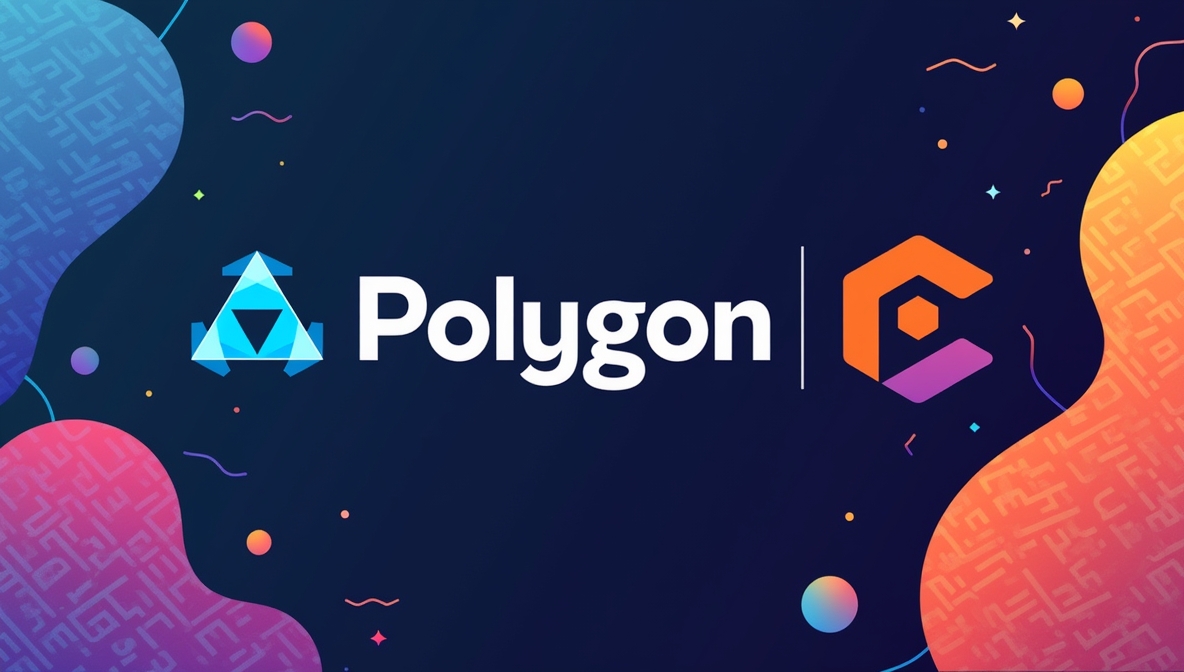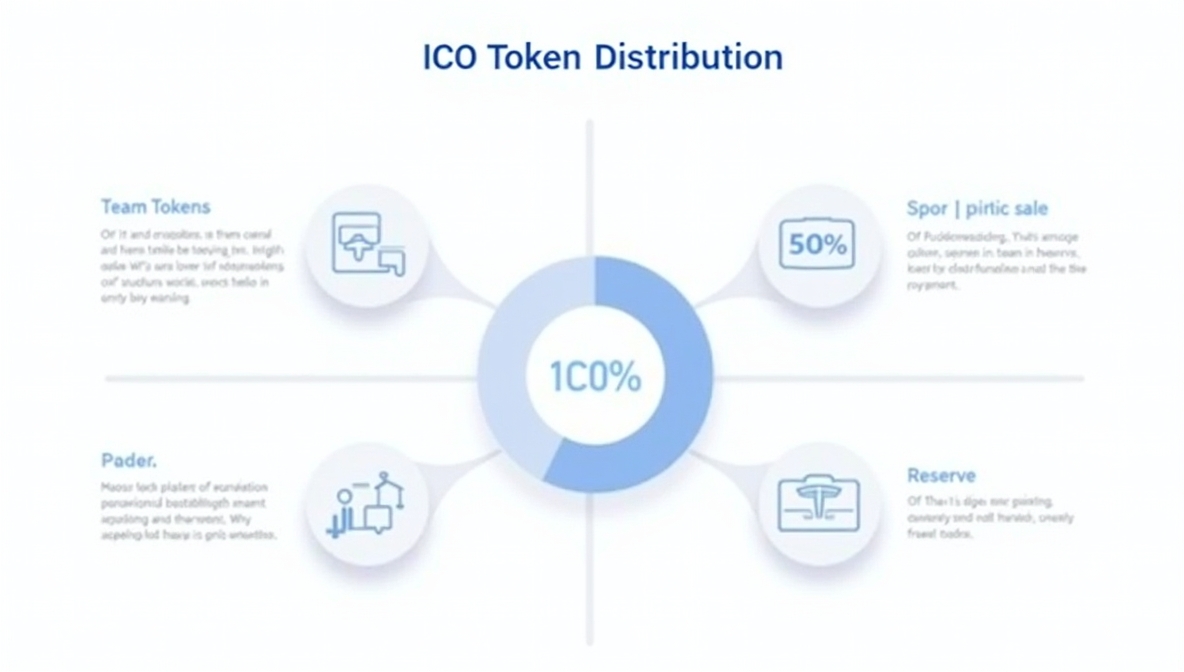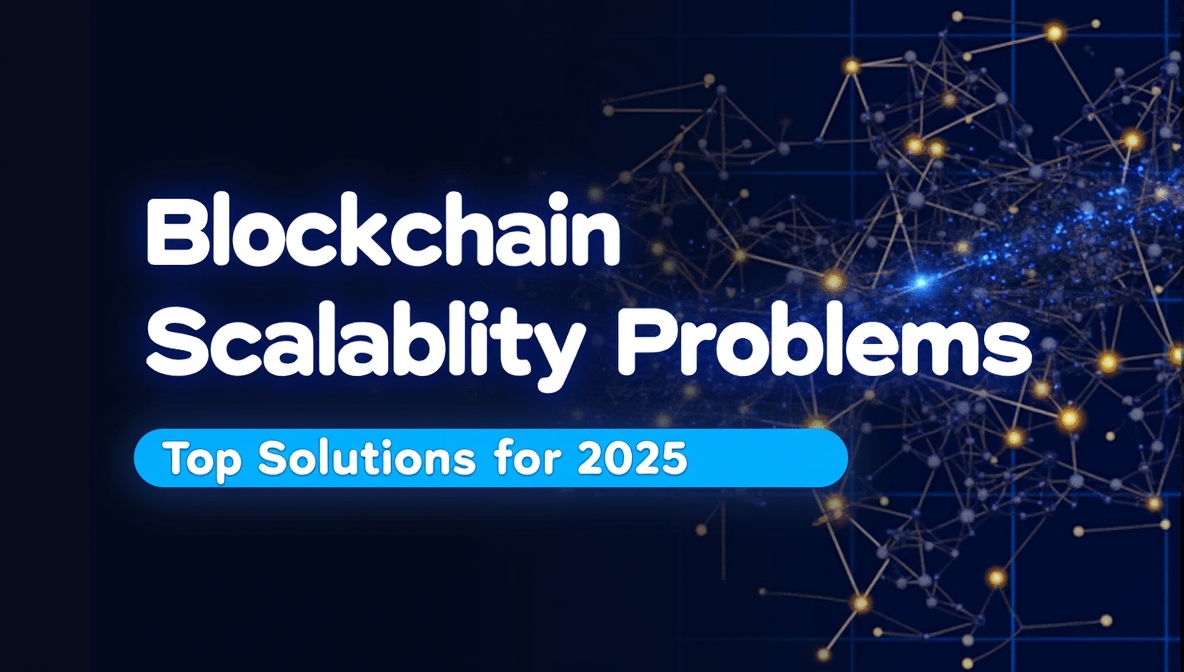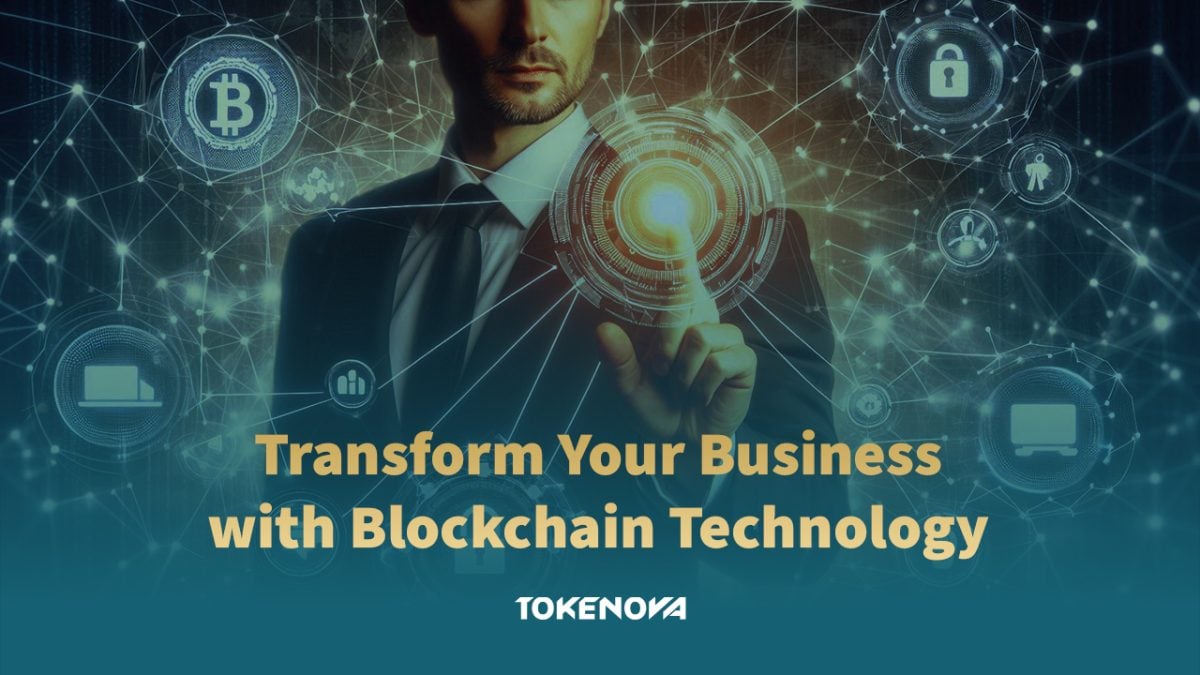Are you an entrepreneur eyeing the burgeoning digital asset space? A developer with the technical acumen to build cutting-edge platforms? The opportunity to build an NFT marketplace from scratch isn’t just a trend; it’s a strategic entry point into the future of digital ownership. For entrepreneurs and developers poised to capitalize on this evolution, this guide provides the essential framework.
You’ve witnessed the traction NFTs have gained, the significant investments, and the passionate communities forming around digital collectibles. Now is the time to move beyond observation and actively create an NFT marketplace that meets specific market needs.
This article delivers a focused roadmap for NFT marketplace development, equipping you with the insights and strategies to build an NFT platform that stands out. We’ll delve into the core components and critical decisions required to architect a robust and scalable digital asset exchange.
Why Build an NFT Platform? Carve Your Own Path

For entrepreneurs, developers, and investors, building an NFT marketplace from scratch isn’t just an option it’s a strategic play. Build an NFT Marketplace from Scratch and you gain unparalleled control, allowing you to sculpt a platform perfectly tailored to your vision and target audience. Forget generic templates; envision a marketplace with AI-powered curation for discerning collectors, or perhaps one offering fractional NFT ownership to democratize access to high-value assets.
This level of bespoke development, going beyond standard NFT Marketplace Development, lets you integrate cutting-edge features like seamless metaverse interoperability or advanced royalty structures that incentivize creators like never before. This isn’t just about launching another platform; it’s about crafting a unique ecosystem.
Multiple Revenue Streams, Direct Control
When you create NFT Marketplace infrastructure from the ground up, you unlock diverse and potent revenue streams. Beyond standard transaction fees, you can implement sophisticated tiered commission structures, offer premium listing options for high-profile drops, or even introduce subscription models for exclusive features and analytics. This direct control over monetization strategies ensures a sustainable and scalable business model, adaptable to the evolving dynamics of the NFT space.
Unleash Bespoke Design and Functionality
Developing your NFT platform independently grants you absolute authority over its design and functionality. This means crafting a user interface (UI) and user experience (UX) meticulously tailored to your specific community’s needs and preferences. Imagine a platform with intuitive search filters catering to niche collectors or integrated social features that foster a vibrant community around specific NFT types. This granular control is invaluable in creating a platform that isn’t just functional, but deeply engaging and sticky.
Forge a Distinct Brand Identity
Your custom-built marketplace becomes a powerful extension of your brand narrative. You dictate the aesthetic, curate the featured collections, and cultivate a community that resonates with your core values. Think of how SuperRare carved out a niche for high-end digital art, or how Foundation championed an artist-centric model. By building your own NFT Platform, you’re not just entering the market; you’re establishing a unique destination with a strong and recognizable identity.
Capitalize on Explosive Market Growth
The NFT market isn’t just a trend; it’s a rapidly expanding frontier. The global non-fungible token (NFT) market size was valued at USD 19.39 billion in 2023 and is projected to touch USD 171 billion by 2032, exhibiting a CAGR of 24.32% during the forecast period. By choosing to Build an NFT Marketplace from Scratch, you position yourself to capture a significant share of this burgeoning market. You’re not just riding the wave; you’re building the vessel, equipped to adapt and innovate as the NFT landscape continues its dynamic evolution.
Key NFT Marketplace Features: The Cornerstones of Success
A successful NFT project hinges on integrating essential features that orchestrate a seamless and engaging user experience. These features aren’t just add-ons; they are the very cornerstones upon which a thriving digital marketplace is built.

Intuitive NFT Storefront: Making a Stellar First Impression
First impressions can make or break you. Your marketplace needs a storefront that not only looks the part but also feels intuitive to navigate. Showcase NFTs with high-fidelity previews, accompanied by detailed descriptions that delve into their metadata and provenance, and present pricing with absolute clarity to attract potential buyers. Consider strategically curating featured collections or highlighting trending NFTs to boost discoverability and spark interest.
Advanced Search and Filters: Guiding Users to Their Grail
In a marketplace teeming with potentially thousands of NFTs, robust search and filtering capabilities are not a luxury they’re a necessity. Users should be able to effortlessly pinpoint specific NFTs based on a wide array of criteria. This includes granular filtering by price range, the specific creator, the encompassing collection, distinct properties or traits inherent to the NFT, and even elusive rarity scores. Effective search functionality isn’t just about finding; it’s about empowering users to discover their next prized possession.
Secure Wallet Integration: The Gateway to Transactions
Seamless integration with widely adopted cryptocurrency wallets like MetaMask, WalletConnect, and Coinbase Wallet is absolutely paramount. This allows users to effortlessly connect their digital coffers and securely conduct transactions on your platform. A smooth and secure wallet connection isn’t just about convenience; it’s about establishing trust and fostering a positive user experience. Consider broadening your reach by offering support for a diverse range of wallets, catering to a wider spectrum of users.
Smart Contracts for NFTs: The Unseen Engine
Smart contracts form the very bedrock of your NFT marketplace. These self-executing agreements act as the silent orchestrators, automating the intricate processes of minting new NFTs and facilitating secure and transparent trading. Developing smart contracts that are not only efficient but also rigorously secure and meticulously audited is a fundamental aspect of building a marketplace that users can rely on. Familiarize yourself with established standards like ERC-721, the go-to for unique NFTs, and ERC-1155, which offers versatility by supporting both fungible and non-fungible tokens.
Responsive UI/UX Design: A Seamless Experience Across Devices
A user-friendly interface coupled with a seamless user experience isn’t just desirable it’s non-negotiable. Your marketplace must be readily accessible and function flawlessly across a spectrum of devices, from the expansive screen of a desktop to the compact display of a smartphone. Intuitive navigation, crystal-clear calls to action, and a visually consistent design language are the cornerstones of a positive user experience, encouraging engagement and fostering a sense of ease.
Read More: Decoding ICOs: A Simple Guide
Steps to Create NFT Marketplace: Your Construction Manual
For entrepreneurs and tech innovators targeting the burgeoning NFT market, building a marketplace from the ground up represents a significant opportunity. This endeavor transcends mere coding; it demands strategic execution and a deep understanding of the ecosystem. Consider this your comprehensive construction manual, guiding you through the essential phases to successfully build an NFT marketplace from scratch.

1. Carve Your Niche: Identifying Your Unique Market Opportunity
In the increasingly crowded landscape of NFT platforms, attempting to cater to every possible NFT type is a recipe for being lost in the noise. Instead, a laser focus on a specific niche provides a crucial competitive advantage. Think like a seasoned venture capitalist: where are the underserved markets, the passionate communities yearning for a dedicated platform? Consider these high-potential areas, each with its own distinct audience and needs:
Curated Digital Art Platforms
Concentrate your efforts on high-caliber, single-edition digital artworks. This strategy directly appeals to serious art collectors and discerning aficionados who prioritize exclusivity, verified provenance, and the prestige of owning unique digital masterpieces. Your platform’s value proposition lies in the rigorous quality control you implement, the esteemed artists you feature, and the vibrant community you cultivate around high-end digital art.
Gaming Asset Powerhouses:
Capitalize on the explosive growth of the play-to-earn gaming sector and the burgeoning metaverse economies. Position your marketplace as the go-to hub for the seamless trading of in-game items, virtual land parcels, unique avatars, and other valuable digital assets that power these immersive digital worlds. Consider implementing multi-chain support, mirroring Magic Eden’s strategic expansion from Solana to Ethereum, to broaden your reach and cater to a wider range of gaming ecosystems.
Eco-Conscious Music and Entertainment Hubs
Tap into the growing demand for sustainable and environmentally responsible NFTs within the music and entertainment industries. Offer exclusively environmentally friendly NFT options, potentially leveraging Proof-of-Stake blockchains known for their lower energy consumption. This approach resonates with a conscious audience of music lovers, film enthusiasts, and other entertainment consumers who are increasingly mindful of their environmental impact.
Before you even begin writing a single line of code, it’s imperative to define your objectives with laser-like precision. Establish concrete Key Performance Indicators (KPIs) that will serve as benchmarks for your success. Examples include:
Target User Acquisition: Aiming to acquire a specific number of active users within the first six months of launch demonstrates early traction and market validation.
Transaction Volume Targets: Achieving a defined monthly transaction volume proves the viability of your marketplace and its ability to facilitate meaningful economic activity.
Strategic Partnerships: Securing strategic partnerships with influential creators, established artists, or key players within your chosen niche can significantly accelerate your growth and enhance your platform’s credibility.
2. Laying the Foundation: Selecting Your Blockchain Backbone
The choice of blockchain is not merely a technical decision; it’s a fundamental strategic choice that will profoundly impact your marketplace’s performance, transaction costs, scalability, and ultimately, the user experience. This isn’t a one-size-fits-all scenario; it’s about carefully weighing the trade-offs and selecting the blockchain that best aligns with your niche, target audience, and long-term vision.
| Blockchain | Transaction Fees | Speed | Popularity | Environmental Impact |
| Ethereum | High | Moderate | Widely adopted | Energy-intensive (Proof of Work) |
| Polygon | Low | Fast | Growing rapidly | More energy-efficient (Layer 2 solution) |
| Solana | Very Low | Very Fast | Increasing adoption | Energy-efficient (Proof of Stake) |
| Tezos | Low | Moderate | Niche communities | Energy-efficient (Proof of Stake) |
Consider the example of Tezos-based platforms like Hic et Nunc, which have made a conscious decision to prioritize a lower carbon footprint by optimizing resource utilization. Your choice of blockchain sends a clear signal about your platform’s values and directly influences the user experience, particularly concerning transaction costs and speed.
3. Building the Infrastructure: Design and Development Essentials
This is the phase where your vision begins to take tangible form. Your development strategy must be robust, user-centric, and prioritize both functionality and security.
Crafting the User Experience (Front-End Development): Employ modern JavaScript frameworks like React.js or Vue.js to construct an intuitive, responsive, and visually appealing user interface. The focus should be on creating a seamless browsing experience, making NFT discovery effortless, and ensuring clear and understandable transaction flows. Implement features such as advanced search filters, personalized recommendations based on user activity, and visually rich NFT previews with detailed metadata.
Powering the Engine (Back-End Development): Develop a scalable and secure server-side infrastructure using robust languages like Node.js or Python. This crucial component handles essential functions such as database management (consider decentralized options like IPFS for storing NFT metadata to enhance immutability), secure user authentication (implementing industry-standard protocols like OAuth 2.0), and reliable API integrations with your chosen blockchain network (utilizing libraries like Web3.js or Ethers.js). Prioritize performance and reliability by implementing load balancing techniques and auto-scaling capabilities to handle fluctuations in user traffic.
Smart Contract Mastery (Smart Contract Development): Develop meticulously crafted and rigorously tested smart contracts, which form the core logic governing NFT minting, secure transactions, transparent royalty distribution, and proof of ownership. For platforms built on Ethereum or other EVM-compatible chains, Solidity is the standard programming language. Implement royalty standards like ERC-2981 to ensure creators are fairly compensated for secondary sales. Crucially, conduct thorough testing using frameworks like Truffle or Hardhat and engage reputable independent security auditors to identify and rectify any potential vulnerabilities before deploying your contracts to the mainnet.
If your core competency doesn’t lie in in-house development, strategically outsourcing to experienced blockchain developers is a prudent decision. This ensures a higher level of quality, accelerates development timelines, and mitigates potential technical pitfalls. When selecting a development partner, prioritize those with a proven track record in building secure and scalable decentralized applications.
4. Gaining Traction: Launch and Strategic Promotion
Building a technically sound marketplace is only half the battle; attracting a vibrant community of users and creators is equally critical for success. Your launch and promotion strategy needs to be multifaceted, targeted, and continuously adapted based on performance data.
Leveraging Modern Digital Marketing Channels: Go beyond traditional marketing approaches. Actively engage your target audience on platforms like TikTok, which has a significant and growing NFT-interested demographic. Actively participate in relevant NFT communities and forums on platforms like Discord and Twitter to build relationships and foster a sense of community. Utilize targeted advertising campaigns on social media platforms frequented by your ideal users, focusing on demographics and interests relevant to your chosen niche.
Strategic Influencer Collaborations: Partner with respected voices and key influencers within the NFT space to build credibility and significantly amplify your reach. Ensure these collaborations are authentic and genuinely resonate with the influencer’s audience. Consider offering exclusive early access to your platform or unique features to incentivize their participation and engagement.
Establishing Thought Leadership Through Content Marketing: Create valuable, informative, and engaging content about NFTs, your platform’s unique features, and the compelling benefits of participating in your ecosystem. Publish well-researched blog posts, comprehensive guides, and insightful tutorials to establish your marketplace as a trusted resource and an authority within the industry. Implement Search Engine Optimization (SEO) strategies, targeting relevant keywords that potential users are likely to search for, to attract organic traffic to your platform.
Learn from the successes of platforms like Magic Eden, which have cultivated thriving community-centric marketplaces through active engagement with their user base and a demonstrated responsiveness to user feedback. Consider implementing community-building features directly within your platform, such as dedicated forums, integrated chat functionalities, or even hosting virtual events to foster a sense of belonging and encourage interaction among users.
5. Navigating the Legal Maze: Ensuring Regulatory Compliance
Ignoring the legal and regulatory landscape is a significant risk that can have severe consequences for your platform’s long-term viability. Proactive compliance is not optional; it’s an essential foundation for building trust and ensuring sustainability.
Thoroughly Understanding the Regulatory Framework: Conduct comprehensive research to understand the Anti-Money Laundering (AML) and Know Your Customer (KYC) regulations that are applicable in your target operating jurisdictions. These regulations are designed to prevent illicit financial activities and are crucial for maintaining the integrity of your platform. Implement robust procedures for user verification and transaction monitoring to comply with these requirements.
Seeking Expert Legal Counsel: Engage with experienced legal professionals who specialize in blockchain and cryptocurrency law. Their expertise is invaluable in navigating the often complex and evolving regulatory environment. They can provide guidance on regulatory compliance, intellectual property rights related to NFTs, and the drafting of legally sound user agreements and terms of service.
Prioritizing User Privacy: Ensure your platform adheres to data privacy regulations such as the General Data Protection Regulation (GDPR) in Europe or the California Consumer Privacy Act (CCPA) in the United States. Implement clear and transparent privacy policies that outline how user data is collected, used, and protected. Ensure that user data is handled securely and with the utmost respect for privacy.
While resources like the NFT Legal Guide can provide valuable general information, seeking personalized legal advice tailored to your specific platform and operating jurisdictions is absolutely crucial.
6. Fortifying Your Defenses: Security and Fraud Prevention
Security breaches and fraudulent activities can severely erode user trust and potentially cripple your platform. Implementing robust security measures is not just a technical consideration; it’s a fundamental requirement for building a sustainable and trustworthy marketplace.
Implementing Robust Security Protocols: Employ strong encryption methods to protect sensitive user data both in transit and at rest. Implement multi-factor authentication (MFA) as a standard security measure for all user accounts to add an extra layer of protection against unauthorized access. Adhere to secure coding practices throughout the development process to prevent common vulnerabilities such as SQL injection or cross-site scripting (XSS) attacks.
Conducting Regular Security Audits: Engage reputable independent security firms to conduct periodic penetration testing and comprehensive smart contract audits. These audits are designed to proactively identify and address potential weaknesses and vulnerabilities in your platform’s infrastructure and smart contract code before they can be exploited by malicious actors.
Learning from Industry Setbacks: Thoroughly analyze past security incidents and breaches that have affected other NFT platforms, such as the phishing attack on OpenSea. Understanding common threat vectors and attack methodologies is crucial for implementing effective preventative measures. This includes educating your users about common phishing scams and implementing robust reporting mechanisms for suspicious activity on your platform.
7. Staying Ahead of the Curve: Ongoing Maintenance and Updates
The NFT space is characterized by its rapid pace of innovation and constant evolution. Your marketplace needs to be agile and adaptable to remain competitive, relevant, and appealing to your user base.
Continuous Monitoring and Bug Fixes: Implement robust monitoring systems to track your platform’s performance, identify and address any bugs or technical issues promptly. Establish clear and accessible channels for user feedback and bug reporting to ensure that issues are addressed efficiently.
Strategic Feature Enhancements: Continuously iterate on your platform and introduce new features based on user feedback, emerging market trends, and advancements in blockchain technology. Consider incorporating features such as NFT staking mechanisms, fractional ownership options for high-value NFTs, or seamless integration with metaverse platforms to enhance the user experience and expand the utility of NFTs within your ecosystem.
Proactive Technology Adoption: Stay informed about the latest advancements in blockchain technology and actively explore opportunities to integrate new features, improve platform performance, and enhance security. Regularly update your smart contracts and platform infrastructure to patch any newly discovered vulnerabilities and optimize overall performance.
By embracing a mindset of continuous improvement and adaptation, you can ensure that your NFT marketplace not only launches successfully but also thrives in the long run, remaining a vibrant and dynamic hub for your community.
Challenges in NFT Marketplace Development: Anticipating the Roadblocks
Building an NFT marketplace from scratch presents a unique and potentially lucrative venture for entrepreneurs, developers, and investors. However, like any ambitious undertaking, it comes with its own set of hurdles. Understanding these potential roadblocks isn’t about being deterred; it’s about strategic foresight and building a resilient platform. Let’s dissect these challenges and, more importantly, explore how to transform them into competitive advantages.

Regulatory Navigation: First-Mover Advantage
The evolving legal landscape surrounding NFTs is undoubtedly a key consideration. Instead of viewing the lack of established global regulations as a purely negative constraint, see it as an opportunity to establish best practices. Being proactive in understanding emerging guidelines and building a flexible platform that can adapt to future regulations positions you as a responsible and forward-thinking player.
Think of it like navigating uncharted waters the first to accurately map the territory gains a significant advantage. Engaging with legal experts early on is crucial to ensure your platform operates within the bounds of current laws and is prepared for future shifts.
Security: Building Trust
The inherent value of NFTs makes your marketplace a target, plain and simple. However, this challenge presents a clear opportunity to build a reputation for unwavering security. Investing in robust security measures isn’t just about preventing attacks; it’s about building trust with your users. Imagine a user considering listing a high-value digital artwork.
Knowing your platform employs rigorous smart contract audits (like those performed by firms like CertiK or Quantstamp) and proactive threat monitoring provides immense peace of mind. This commitment to security becomes a key differentiator, attracting users who prioritize the safety of their digital assets.
Expertise: Strategic Investment
Developing a sophisticated NFT marketplace demands specialized skills, and yes, this comes with a cost. However, consider this investment as building a high-performance engine for your business. Securing top-tier blockchain developers proficient in Solidity and modern front-end frameworks is akin to hiring experienced engineers for a cutting-edge tech company. While the initial outlay might seem significant, leveraging modular development approaches or partnering with experienced blockchain development firms can optimize costs and accelerate development. Remember, skimping on expertise can lead to costly errors and security vulnerabilities down the line.
User Acquisition: Strategic Launch
The “chicken and egg” problem of attracting both creators and buyers is a classic challenge for any new marketplace. However, this is where a well-defined and aggressively executed marketing strategy comes into play. Think beyond simply launching the platform. Consider targeted marketing campaigns focusing on specific NFT niches, offering early adopter incentives for both creators and buyers (like reduced transaction fees or featured listings), and actively fostering a vibrant community through social media and dedicated forums. Strategic partnerships with established creators can act as a powerful catalyst, bringing in desirable content and jumpstarting the engine of your marketplace.
Scalability: Building for Growth
Anticipating growth is crucial. While initial traffic might be manageable, your platform needs to be built to handle significant increases in users and transactions. This isn’t just about avoiding downtime; it’s about ensuring a smooth and efficient user experience as your marketplace scales. Choosing the right blockchain infrastructure (considering factors like transaction speed and cost) and implementing robust caching mechanisms and intelligent load-balancing techniques are essential.
Think of it as building a highway system you need to ensure it can handle rush hour traffic without gridlock. Investing in scalable architecture from the outset prevents costly overhauls down the line and ensures your platform can handle future success.
Cost of Building an NFT Marketplace: Understanding the Financial Landscape
For entrepreneurs, developers, and investors eyeing the burgeoning NFT space, understanding the financial commitment required to build an NFT marketplace from scratch is paramount. This isn’t just about writing a check; it’s about strategic financial planning to launch a successful platform. Let’s cut to the chase and break down the costs involved in bringing your vision for an NFT marketplace development to life.

Initial Capital: Real Figures
Forget vague estimates. A foundational NFT platform with essential features will likely require an investment ranging from $50,000 to $150,000. If you’re aiming for a more sophisticated platform with advanced functionalities, custom design, and robust security the kind that truly stands out expect figures to climb beyond $200,000. Think of these as starting points; your specific requirements will ultimately dictate the final tally.
Cost Breakdown: Where Your Money Goes
To provide a clearer picture, consider this breakdown of typical expenses:
| Component | Cost Range | Key Factors Influencing Cost |
| Frontend | $15,000 – $40,000 | Complexity of UI/UX design, number of features (e.g., advanced search, filtering), responsiveness across devices, integration with blockchain. |
| Backend | $20,000 – $50,000 | Complexity of smart contracts, database design, API integrations, scalability requirements, security protocols. |
| Smart Contracts | $5,000 – $20,000 | Number and complexity of smart contracts, chosen blockchain platform (gas fees), security audits. |
| Blockchain | $3,000 – $10,000 | Complexity of integrating with the chosen blockchain(s), cross-chain compatibility requirements. |
| Design & UX | $5,000 – $20,000 | Level of customization, number of design iterations, user research and testing. |
| Security | $3,000 – $15,000 | Scope and depth of the audit, reputation of the auditing firm. This is a non-negotiable investment for platform integrity. |
| Testing | $2,000 – $8,000 | Extent of testing required, number of test cases, automation efforts. |
| Management | $5,000 – $15,000 | Duration of the project, size of the development team, complexity of communication and coordination. |
Cost Optimization: Smart Strategies
Building an NFT marketplace doesn’t have to break the bank. Here’s how savvy entrepreneurs can keep costs in check:
Open-Source: Explore readily available open-source tools and frameworks for certain functionalities. This can significantly reduce development time and costs without reinventing the wheel.
Phased Launch: Don’t try to build everything at once. Launch with a Minimum Viable Product (MVP) containing core features. This allows you to get to market faster, gather user feedback, and iterate based on real-world usage, minimizing upfront investment.
Tech Choices: Carefully evaluate blockchain platforms. While some offer greater visibility, others might be more cost-effective in terms of gas fees and development resources, especially in the initial stages.
Prioritize Core: Focus on the essential features that deliver value to your users. Avoid feature creep early on. You can always add more bells and whistles later.
Remote Talent: Accessing a global pool of developers can offer cost advantages compared to solely relying on local talent, without compromising on expertise.
Ultimately, building an NFT marketplace is a strategic investment with the potential for significant returns. By understanding the cost landscape and employing smart strategies, you can navigate the finance.
Tokenova: Your Trusted Advisor for NFT Marketplace Success
Are you an entrepreneur, developer, or investor ready to make your mark in the NFT space? Tokenova is your go-to consultancy for building, scaling, and optimizing NFT marketplaces. With our deep expertise in blockchain technology, market trends, and strategic planning, we help you navigate the complexities of NFT marketplace development with confidence.
What Tokenova Offers:
- Strategic Advisory: Guidance on choosing the right blockchain, defining your niche, and crafting a roadmap tailored to your goals.
- Market Insights: Stay ahead of industry trends with actionable advice that positions your platform for success.
- Technology Expertise: From smart contracts to blockchain integration, we provide the technical knowledge to build secure, scalable solutions.
- Regulatory Navigation: Ensure compliance with evolving NFT regulations to protect your business and gain user trust.
- Growth Strategies: Proven methods to attract creators, buyers, and investors to your marketplace.
Why Tokenova? We don’t just consult we partner with you to bring your vision to life. Our client-focused approach ensures customized strategies and actionable recommendations that deliver measurable results.
Conclusion
The quest to create NFT marketplace success is an ambitious undertaking, but one brimming with potential rewards. It demands meticulous planning, a high degree of technical proficiency, and a deep understanding of the ever-evolving NFT ecosystem. By grasping the essential features that define a successful platform, diligently navigating the various stages of development, and proactively preparing for the challenges that lie ahead, you can strategically position yourself to establish a thriving marketplace that empowers both the creators and the collectors within this exciting digital realm.
The advantages of building your own NFT marketplace are undeniable and compelling: the potential to unlock diverse and significant revenue streams, the unparalleled control you gain over the platform’s design and functionality, and the unique opportunity to cultivate a distinct brand identity within the burgeoning landscape of digital assets. Don’t simply be a passive observer in the NFT revolution; become an active builder, a driving innovator, and a visionary leader.
Are you prepared to take the plunge and build NFT platform that not only participates in but actively redefines the future of digital ownership? The opportune moment to act is now. The market for digital collectibles is experiencing explosive growth, and the possibilities are boundless for those who are ready to construct the infrastructure that will shape the future of this exciting space.
Key Takeaways
- Building your own NFT marketplace presents significant advantages over relying on existing platforms, granting you greater control and unlocking substantial revenue potential.
- Essential features that form the bedrock of a successful marketplace include an intuitive storefront, advanced search capabilities, secure wallet integration, and robust smart contracts.
- Meticulous planning and flawless execution across the critical domains of development, strategic marketing, and legal compliance are paramount for achieving success.
- Be prepared to address the inherent challenges related to security vulnerabilities, the complexities of regulatory compliance, the imperative of attracting both users and creators, and the need to ensure scalability for future growth.
- The cost of developing an NFT marketplace will vary depending on the specific features you implement, the blockchain platform you choose, and the expertise of your development team.
How do I choose an environmentally sustainable blockchain for my NFT marketplace?
Select blockchains that use Proof-of-Stake (PoS) consensus mechanisms, which are significantly more energy-efficient than Proof-of-Work (PoW). Options like Polygon, Solana, and Tezos have gained recognition for their reduced environmental impact. Evaluate their energy consumption metrics and check for community-led sustainability initiatives to ensure alignment with your values.
What are the most effective strategies for marketing my NFT marketplace?
Focus on creating a strong and engaged community through platforms like Discord, Twitter, and forums. Collaborate with influential artists or NFT creators to leverage their networks. Provide incentives such as exclusive NFT drops or reduced fees for early adopters. Supplement these efforts with targeted advertising and content marketing, such as blogs and guides, to attract organic traffic and establish credibility.
How can I ensure my NFT marketplace is secure?
Adopt a multi-layered security approach by implementing robust security protocols, including regular audits of your smart contracts and platform infrastructure. Use multi-factor authentication for user accounts and educate users about common threats like phishing. Partner with reputable cybersecurity firms and create a transparent reporting system to address and mitigate suspicious activity efficiently. Proactive measures ensure user trust and safeguard assets.











